Introduction
How To Feed Pigs Cheaply: Raising pigs can be a rewarding endeavor, whether for personal consumption or as part of a larger farming operation. However, the cost of feeding pigs can be a significant portion of the overall expenses involved in pig farming. If you’re looking to learn how to feed pigs cheaply without compromising their health and well-being, you’ve come to the right place. Understanding the nutritional requirements of pigs at different life stages and tailoring their diets accordingly can help you avoid overfeeding or wasting resources on unnecessary supplements.
Exploring alternative, locally sourced feed ingredients can significantly reduce costs. We’ll discuss various options, such as surplus or byproduct feeds and crop residues, and how to safely incorporate them into your pigs’ diets. Growing your own feed crops can be a cost-effective approach. We’ll explore techniques for cultivating feed crops efficiently, taking into account factors like soil health and crop rotation.
Proper feeding practices, such as limiting feed waste and using feeders that discourage spillage, can help you get the most out of your feed investment. Keeping your pigs veins healthy through preventive measures, vaccination programs, and regular veterinary care is essential to avoid costly diseases and the need for expensive treatments. Monitoring expenses and keeping detailed records will help you identify areas where you can cut costs without compromising pig health or production.
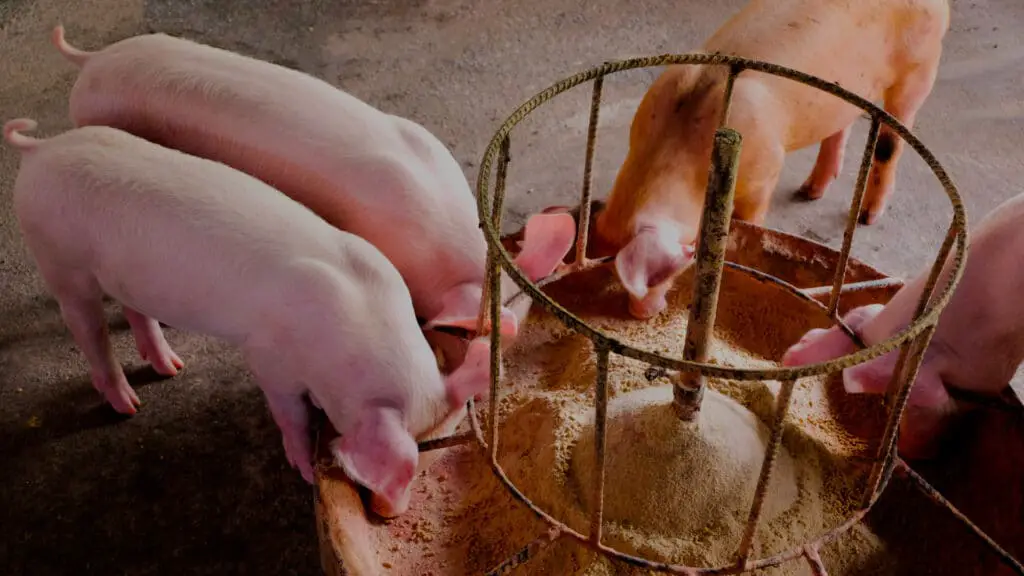
What is the best cheap food for pigs?
Barley is probably the best all-round grain for pigs. Feed it crushed or steeped in water to soften. Meat meal provides good protein.
Grains: Grains are a staple in pig diets and can be cost-effective sources of energy. Common grains include corn, barley, wheat, and oats. These can often be purchased in bulk at lower prices.
Legumes: Legumes like soybeans and field peas are good sources of protein for pigs. If you have the capability, you can even grow these on your farm to reduce costs.
Byproduct Feeds: Byproduct feeds, such as bakery waste, distillers’ grains, and brewer’s grains, can be obtained from local bakeries, breweries, or distilleries at lower costs or even for free. Ensure they are safe and appropriate for pig consumption.
How to make simple pig feed at home?
Make a feed mix that is about 80 percent sorghum, 10 percent sunflower meal, 10 percent calcium and protein supplement, and 0.25 percent salt. Quality of a good pig food contains; Pig food should be fresh and not stale. It must be a good procedure and packaged.
Storage: Store the homemade pig feed in a cool, dry, and well-ventilated area to prevent spoilage or infestations. Keep it in a tightly sealed container or feed bin to maintain freshness.
Feeding: Offer the homemade feed to your pigs according to their age and size. Growing pigs and pregnant or lactating sows have different nutritional requirements. Consult with a professional to determine the appropriate feeding regimen.
Supplementary Foods: While the homemade feed can form the basis of their diet, consider supplementing with other items like surplus produce, kitchen scraps (excluding toxic or spoiled foods), and pasture if available. This can provide variety and additional nutrients.
How much does it cost to feed 1 pig?
“From weaning to market, swine feed costs are running $95 to $105 per pig, depending on your diets and purchasing strategies,” says Joel DeRouchey, swine nutritionist at Kansas State University (KSU).
Piglets (0-8 weeks): Piglets require a starter feed specifically formulated for their rapid growth and development. The cost of feeding a piglet during this stage can vary, but it’s estimated to be around $20 to $40 per month per piglet, depending on local feed prices and the type of starter feed used.
Grower Pigs (8-20 weeks): As pigs transition from piglets to growers, their nutritional needs change. The cost of feeding a grower pig during this stage can range from $30 to $60 per month per pig, depending on factors like the pig’s weight, breed, and feed quality.
Finishing Pigs (20-24 weeks to market weight): The finishing stage requires a diet optimized for meat production. Feeding a pig to market weight (usually around 250-300 pounds or 115-135 kilograms) can cost between $60 to $150 per month per pig, again depending on variables like feed quality, weight, and breed.
Which feed is best for pigs?
Farm grains are the most common and best source of food to feed pigs. Most typically corn-based feeds are used because they are high in digestible carbohydrates, low in fiber, and cost effective.
Finisher Feed: Finisher feed is intended for pigs in the final stage of growth, from around 20 weeks until they reach market weight. It is formulated to promote efficient muscle development and meat production.
Breeding Sow Feed: Breeding sows have unique nutritional needs, especially during pregnancy and lactation. Sow feed should be high in energy and contain the right balance of nutrients to support reproduction and milk production.
Boar Feed: Boars used for breeding also have specific nutritional requirements. Their feed should provide the necessary nutrients to maintain good health and reproductive performance.
How much pig feed per day?
between 5 and 7 pounds per day
Rules of thumb in determining feed costs:
The average amount that your pig will grow each day is between 1.7 and 2.0 pounds. 2. The average amount of feed your pig will consume each day is between 5 and 7 pounds per day.
Piglets (0-8 weeks): During the piglet stage, they typically consume around 1/2 to 1 pound (0.23 to 0.45 kilograms) of starter feed per pig per day. This amount gradually increases as they grow.
Grower Pigs (8-20 weeks): Grower pigs require more feed as they continue to grow. On average, they may eat between 2 to 4 pounds (0.9 to 1.8 kilograms) of grower feed per pig per day.
Finishing Pigs (20-24 weeks to market weight): The feed intake of finishing pigs varies based on factors like weight, breed, and the desired market weight. On average, they may
Can pigs eat rice?
Most results have shown that rice can be partially or completely used to replace corn in pig diets without negatively affecting pig growth and production.
Cooked Rice: Pigs should only be fed cooked rice. Raw rice is difficult for pigs to digest and can lead to digestive issues.
Plain Rice: Serve plain, unseasoned rice to your pigs. Avoid adding spices, sauces, or flavorings, as these can be harmful to them.
Balanced Diet: While rice can provide carbohydrates, it should not be the sole component of a pig’s diet. Pigs require a balanced diet that includes protein, fiber, vitamins, and minerals. Rice should be considered a supplementary or complementary feed.
Moderation: Like any feed, rice should be offered in moderation. Pigs have different nutritional needs at various life stages, so it’s essential to ensure they receive a well-rounded diet that meets their specific requirements.
What are 3 things pigs eat?
What Do Pigs Like to Eat? Pigs will eat just about anything, but on commercial farms, they mostly eat corn, soybean, barley, and wheat meal.
Commercial Pig Feed: This is a specially formulated feed that provides pigs with the essential nutrients they need for growth and health. Commercial pig feed typically includes grains like corn and wheat, protein sources such as soybean meal, vitamins, minerals, and other additives. It’s designed to meet the nutritional requirements of pigs at different life stages, including piglets, grower pigs, finishing pigs, and breeding sows.
Vegetables: Pigs are fond of a variety of vegetables, including but not limited to carrots, broccoli, cucumbers, cabbage, and leafy greens. These vegetables provide vitamins, minerals, and dietary fiber in their diet. Pigs also enjoy root vegetables like potatoes and sweet potatoes.
Fruits: Pigs have a sweet tooth and enjoy many types of fruits, such as apples, pears, bananas, and watermelon. Fruits provide natural sugars, vitamins, and hydration to their diet.
What food makes pigs grow faster?
Creating an Optimized Hog Feed
As an energy source, choose a grain mix of barley, wheat, sorghum and corn for your pig’s diet. At least half the mix should be number two yellow corn. Though low in protein, it is considered a primary energy source in pig diets.
High-Quality Commercial Feed: Commercial pig feed is formulated to provide the optimal balance of nutrients for different stages of pig growth. Look for feeds that are specifically designed for piglets, growers, and finishers. These feeds typically contain a combination of grains (such as corn and wheat), protein sources (like soybean meal), vitamins, minerals, and other additives to support growth.
Protein: Protein is essential for muscle development and growth. Pig feed should contain an appropriate level of protein, with higher levels provided to younger pigs. Protein sources may include soybean meal, fish meal, and other legumes.
Energy: Energy-rich grains like corn are excellent sources of calories for pigs. Adequate energy intake supports growth and weight gain.
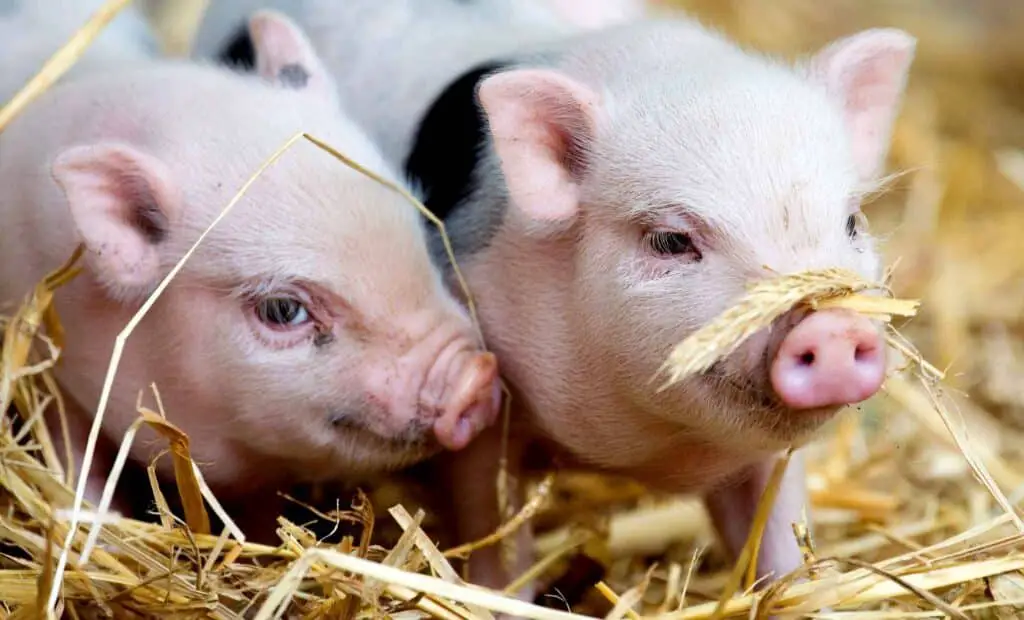
Conclusion
It’s essential to strike a balance between cost savings and ensuring your pigs receive the nutrition they need to thrive. Monitoring their health, providing a clean and stress-free environment, and practicing good record-keeping are all vital components of cost-effective pig farming.
Ultimately, the goal of feeding pigs cheaply is not solely about reducing expenses but also about promoting sustainability and responsible farming practices. When you feed pigs economically, you not only benefit your own bottom line but also contribute to the efficient and ethical management of these intelligent and valuable animals.
Keep an eye on market trends and demands for pork products. Adjust your production accordingly to meet consumer preferences and maximize profits. Investigate if there are any government programs or subsidies available for pig farming in your region. These programs may provide financial assistance or resources to help reduce costs. Regularly review your budget and expenses, making adjustments as needed. Keeping detailed records will help you identify areas for improvement and cost reduction.

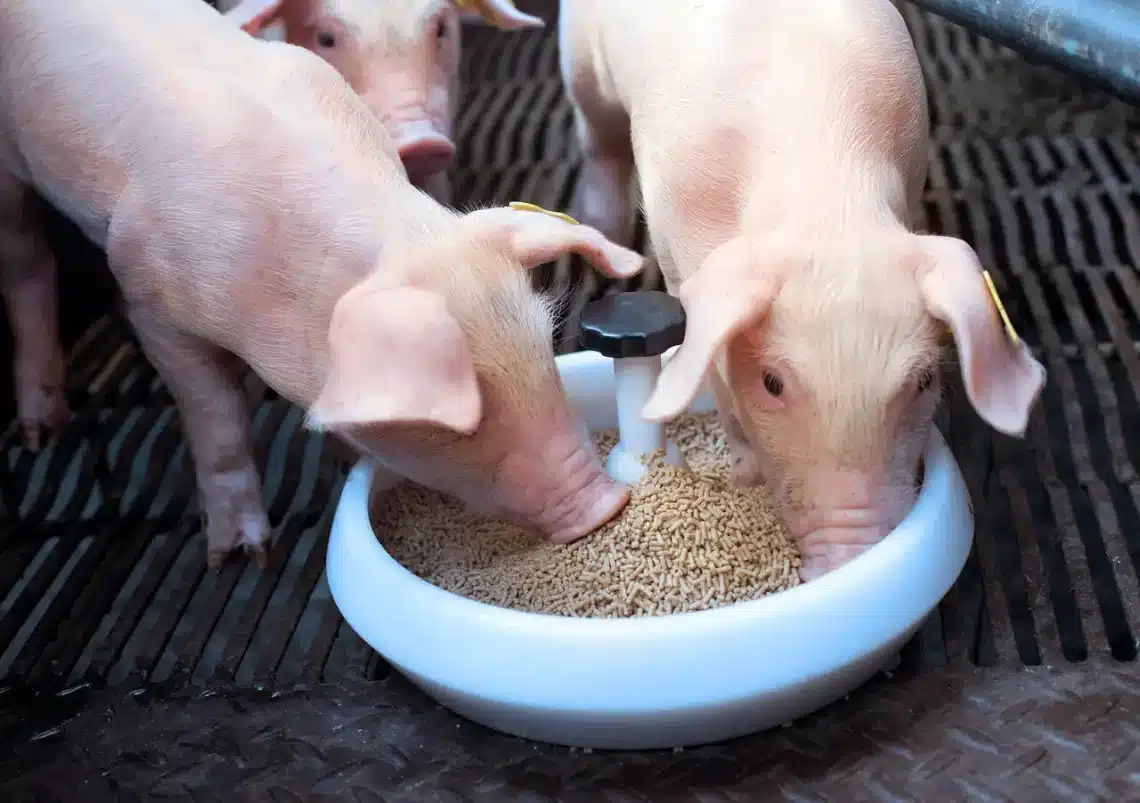
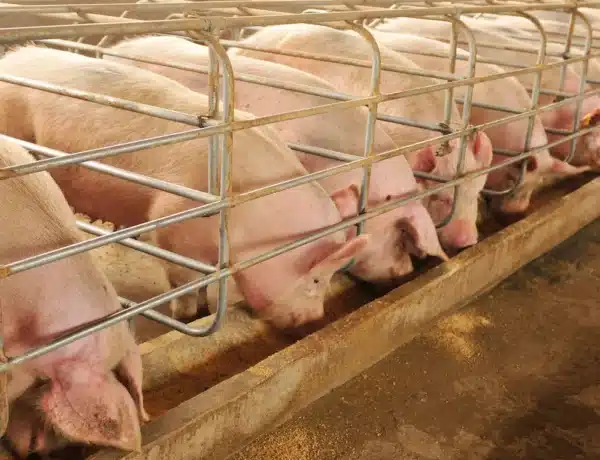
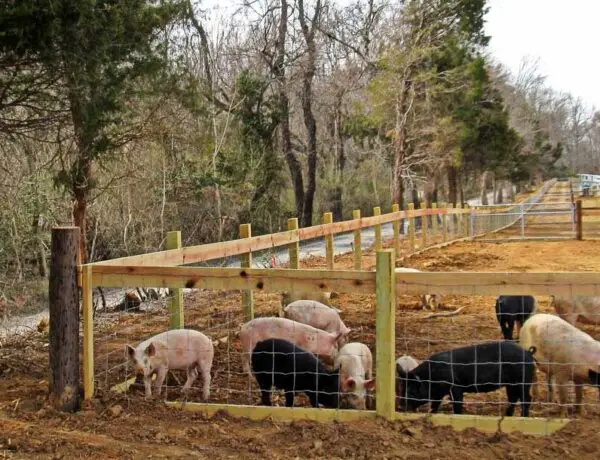
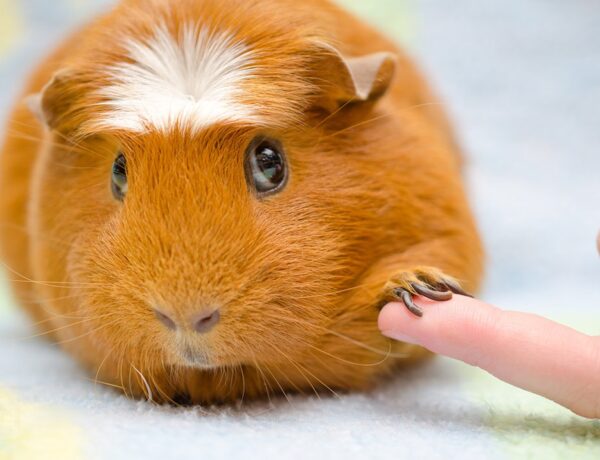
No Comments